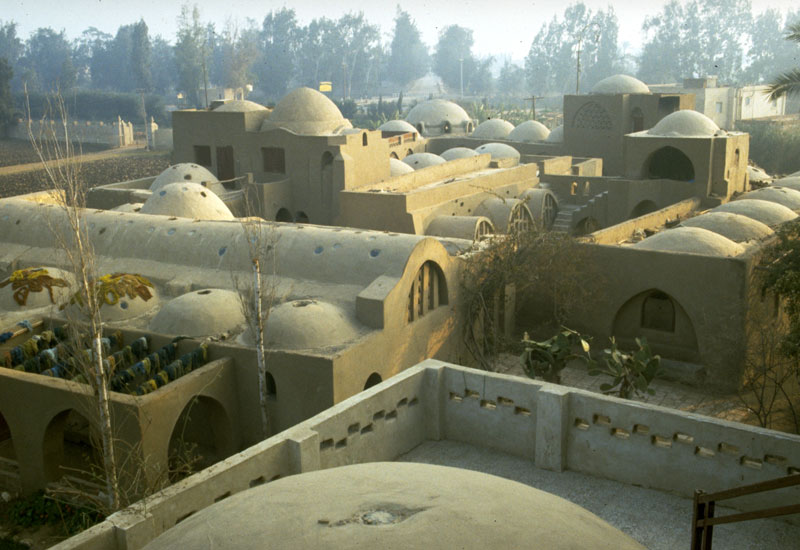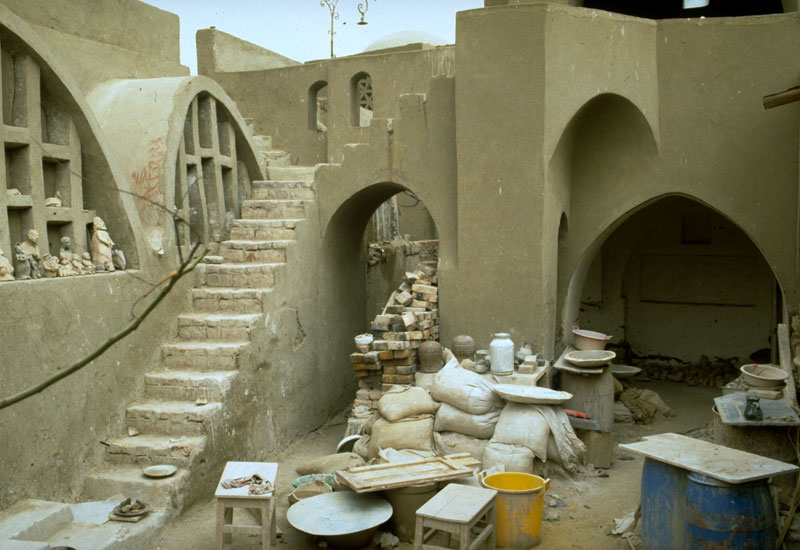By Nour El-Miligi
You’ve probably heard about dozens of artists, each with their own distinctive approach and angle of expressing their philosophy to the world. Yet only a few can actually claim to have made a permanent imprint on the world, and we definitely regard Ramses Wissa Wassef as one of those few.
Wassef was an art patron who was born in 1911 and studied architecture in France, eventually becoming a professor of art and architecture at the College of Fine Arts in Cairo. Awestruck by the beauty of historic towns, he knew how to make good use of local craftsmen, including stonecutters, traditional carpenters, glass blowers, and potters, to showcase authentic works inspired by heritage. He was ahead of his time while preserving vernacular heritage. His genuine fondness and faith in the arts, in potters and weavers, Wassef was capable of changing many lives, creating their dreams in the form of tapestries.
As a believer in ‘beauty in the form’ and how children were naturally endowed with talent, capable of creating artworks without any intruding influence, he was determined to establish a setting that would encourage the innate talent within children to come out, and that’s how the Ramses Wissa Wassef Art Centre came to life back in 1951.

The center located in the Harrania district of Giza, near the Giza Pyramids, was specifically established for villagers to unleash their diverse artistic talents in a nurturing environment for self-expression and creation to bloom. Without any official artistic education, but rather following this simple motto: No rules, no plans, no external aesthetic influence, and no reviews from adults. Children were capable of doing wonders at the art center. With no drafts or pre-designs used, Wassef was able to prove his theory of innate talent with his center working as a catalyst for talent growth.
Artists were able to spontaneously create designs and weave wallpaper artworks, up to three meters wide, onto the loom, with no prior framework. Flourishing tapestry masterworks created by the young artists were internationally recognized, participating in many worldwide exhibitions. The center has been continuously operating since it’s a foundation, with textile artists bringing creative artworks and tapestries to life for over 60 years.

Our story’s hero has won multiple awards, including the Egyptian National Award For The Arts in 1961 for his stained glass window designs, and the Aga-Khan Architectural Award in 1983 for the foundation of the center.
After Wassef passed away in 1974, his 98-year-old wife, Sophie Habib together with her two daughters, took over the center to keep his legacy alive.
Today, 30 artists are involved in wool and cotton weaving produced in the center and the Wassef family has built an artistic and cultural legacy, with seeds that have been planted many years back. The Ramses Wissa Wassef Center is living proof of the man’s beliefs and theories.



